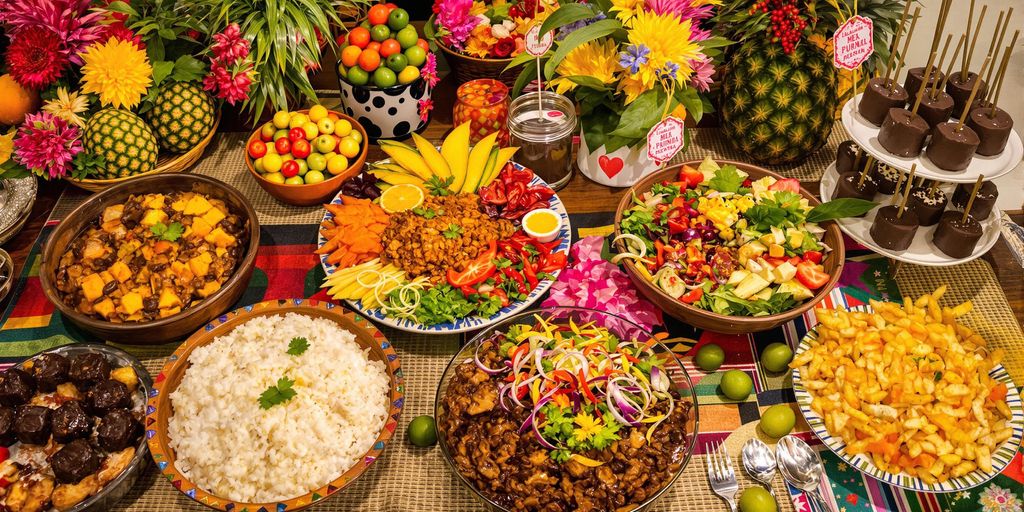Note that iPhone devices from Mainland China aren’t eSIM compatible. Also iPhone devices from Hong Kong and Macao aren’t compatible (except for iPhone 13 Mini, iPhone 12 Mini, iPhone SE 2020 and iPhone XS)
Brazilian cuisine is a fascinating blend of indigenous, African, European, and even Asian influences, creating a rich and diverse food culture that reflects the country’s history and geographical vastness. From hearty stews to delectable desserts, Brazilian food is an explosion of flavors, colors, and textures that captivate locals and travelers alike.
In this culinary journey, we’ll explore some of Brazil’s most iconic dishes, starting with the legendary feijoada and ending on a sweet note with brigadeiro. Along the way, we’ll discover street food, seafood specialties, and regional delights that make Brazilian cuisine truly unique.
The Rich History of Brazilian Cuisine
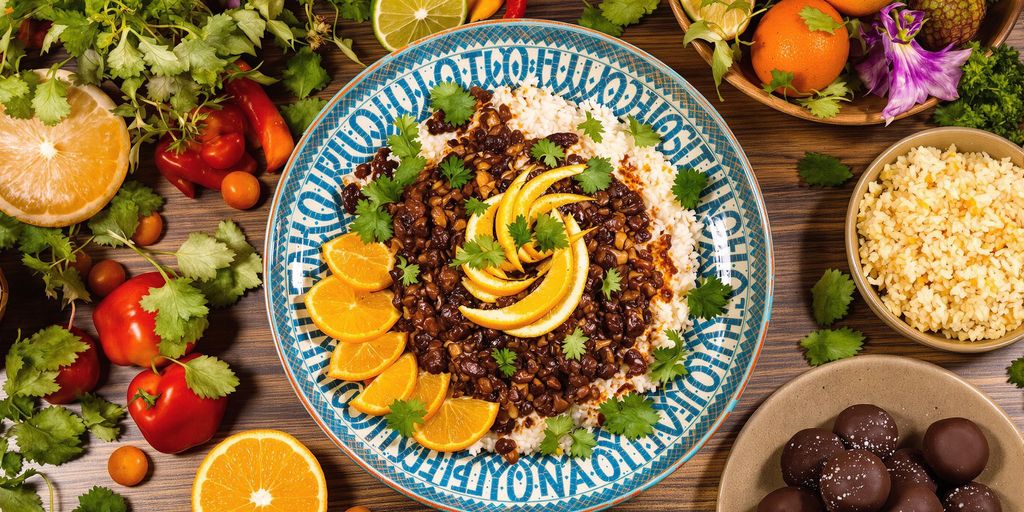
Indigenous Roots and Ingredients
Before European ships arrived on Brazil’s shores, indigenous communities had already developed a rich culinary tradition. Staples like cassava (manioc), corn, and tropical fruits such as açaí and cupuaçu were central to their diet. They also relied on techniques like roasting and fermenting, which are still evident in Brazilian cooking today. Dishes like beiju, a type of cassava flatbread, are direct links to these early traditions.
Portuguese Influence on Brazilian Dishes
When the Portuguese colonized Brazil in the 1500s, they brought with them ingredients and cooking methods that became integral to Brazilian cuisine. Sugarcane, wheat, and livestock like pigs and cows were introduced, along with the concept of stews and desserts made with eggs and sugar. Feijoada, Brazil’s iconic black bean stew, is said to have roots in Portuguese cooking, adapted over time with local ingredients and flavors.
African Contributions to Brazilian Flavors
The transatlantic slave trade brought millions of Africans to Brazil, and with them came a wealth of culinary knowledge and ingredients. Palm oil (dendê), okra, and spices like malagueta pepper became staples in regions like Bahia. Dishes such as acarajé (black-eyed pea fritters) and vatapá (a creamy seafood and nut stew) are deeply influenced by African traditions, blending seamlessly with local and Portuguese elements to create something uniquely Brazilian.
Regional Diversity in Brazilian Cuisine
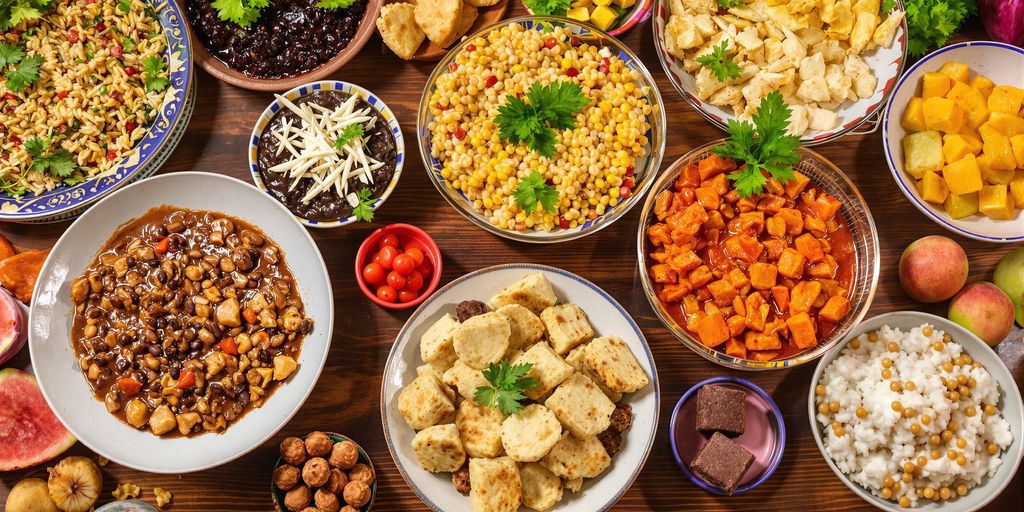
The Amazonian Culinary Experience
The Amazon is like a world of its own when it comes to food. With its vast rainforests and rivers, the region offers ingredients you won’t find anywhere else. Think açaí, but not the smoothie bowl kind—it’s used in savory dishes here. Then there’s tucupi, a yellow sauce made from manioc, which is both tangy and earthy. And if you’re adventurous, you might try pirarucu, a huge freshwater fish that’s often salted and dried. The food here is all about using what nature provides, and it’s as wild as the landscape itself.
Northeastern Spices and Traditions
The Northeast is where things get spicy—literally. This region is known for its use of bold flavors, often influenced by African culinary traditions. Dishes like vatapá, a creamy shrimp and peanut stew, and acarajé, deep-fried black-eyed pea fritters, are staples. Coconut milk, dendê oil (palm oil), and fresh seafood are the stars of the show. If you’re visiting, don’t skip moqueca baiana, a rich seafood stew that’s a cultural icon. The food here is vibrant and full of life, much like the people and the music.
Southern Brazil’s European-Inspired Dishes
Head south, and you’ll notice a shift in the menu. This region has a strong European influence, thanks to German, Italian, and Portuguese immigrants. You’ll find hearty dishes like churrasco, a style of barbecue that’s all about perfectly grilled meats. There’s also polenta, which is often served creamy or fried, and plenty of pasta dishes that feel like they came straight from Italy. And let’s not forget the wines—this is Brazil’s wine country, after all. The food here is comforting, filling, and perfect for cooler weather.
Iconic Brazilian Dishes You Must Try
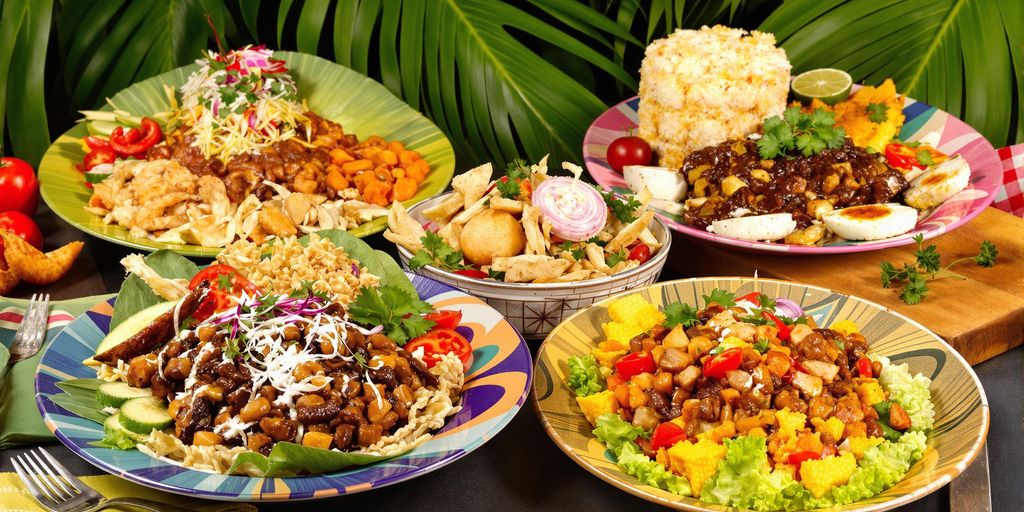
Feijoada: The National Dish
Feijoada is more than just a meal; it’s a cultural experience. This hearty stew of black beans and pork cuts is often considered Brazil’s national dish. Traditionally, it’s cooked slowly to allow the flavors to meld together. The dish is typically served with white rice, collard greens, orange slices, and farofa (toasted cassava flour). Feijoada is a dish for gatherings, often enjoyed on Wednesdays and Saturdays at restaurants or during family get-togethers. It’s rich, filling, and deeply comforting.
Moqueca: A Seafood Delight
Moqueca is a seafood stew that’s as vibrant as Brazil itself. With roots in both African and Portuguese culinary traditions, this dish combines fish or shrimp with coconut milk, tomatoes, onions, garlic, and cilantro. The key to its unique flavor is dendê oil, a red palm oil that adds depth and color. Served bubbling hot in a clay pot, moqueca is best enjoyed with rice and pirão, a creamy sauce made from fish stock and cassava flour. It’s a dish that captures the essence of Brazil’s coastal regions.
Pão de Queijo: The Addictive Cheese Bread
No trip to Brazil is complete without trying pão de queijo. These small, chewy cheese breads are made from tapioca flour and cheese, usually Minas cheese. They’re naturally gluten-free and have a delightful texture—crispy on the outside and soft on the inside. Pão de queijo is a popular snack, often enjoyed with coffee for breakfast or as an afternoon treat. It’s simple yet utterly irresistible, a true staple of Brazilian cuisine.
Travel Smart in Brazil
Enjoy reliable eSIM data for maps, food guides, and more.
Street Food Culture in Brazil
Coxinha: A Popular Snack
Coxinha is one of Brazil’s most beloved street foods, and it’s easy to see why. Shaped like a teardrop, this deep-fried snack is made of shredded chicken encased in a dough that’s lightly seasoned and breaded. Vendors sell them fresh and hot, making them a favorite for people on the go. The crispy exterior contrasts perfectly with the soft, flavorful filling. Some places even add cream cheese to the chicken for an extra indulgent touch. If you’re visiting Brazil, trying a coxinha is practically a rite of passage.
Acarajé: A Taste of Bahia
Acarajé is more than just food; it’s a piece of Bahian culture. This dish is made from black-eyed pea dough, shaped into balls, and deep-fried in dendê oil (palm oil). Once cooked, it’s split open and stuffed with vatapá, a spicy paste made from shrimp, peanuts, and coconut milk. Often sold by women dressed in traditional Bahian attire, acarajé is as much a cultural experience as it is a culinary one. The spicy kick and rich flavors make it unforgettable.
Pastel: The Brazilian Empanada
Pastel is a versatile street food that can be found at markets and fairs across Brazil. These thin, crispy pastries are typically filled with a wide range of ingredients, from savory options like cheese, meat, and heart of palm to sweet fillings like guava paste and chocolate. They’re fried to golden perfection and often served with a side of sugarcane juice. The combination of the flaky pastry and the warm filling makes pastel a crowd-pleaser for all ages.
The Sweet Side of Brazilian Cuisine
Brigadeiro: Brazil’s Favorite Treat
If there’s one dessert that screams Brazil, it’s the brigadeiro. These bite-sized chocolate truffles are a staple at birthday parties, weddings, and even casual get-togethers. Made with just three main ingredients—sweetened condensed milk, cocoa powder, and butter—they’re simple yet indulgent. The mixture is cooked until thick, rolled into small balls, and coated in chocolate sprinkles. Some people like to get creative, swapping the sprinkles for shredded coconut or crushed nuts. Brigadeiros are more than just a treat; they’re a bite of nostalgia for many Brazilians.
Beijinho: Coconut Bliss
Another party favorite, beijinho (which translates to “little kiss”) is a coconut-based cousin of the brigadeiro. The process is almost identical, but instead of cocoa powder, you use shredded coconut and sometimes a hint of vanilla. Once rolled, beijinhos are traditionally coated in more coconut and topped with a single clove for decoration. They’re sweet, chewy, and perfect for anyone who loves the tropical flavor of coconut. Like brigadeiros, they’re a must-have at celebrations.
Quindim: A Custard Delight
Quindim is a dessert that stands out for its glossy, bright yellow appearance and rich, custard-like texture. Made with egg yolks, sugar, and shredded coconut, this dessert is baked in small molds and then flipped upside down to reveal a smooth, shiny surface. The coconut settles at the bottom during baking, creating a two-layered effect. The result is a dessert that’s both visually stunning and deliciously rich. It’s often served at special occasions but can also be found in bakeries across Brazil.
Festive Foods and Celebrations
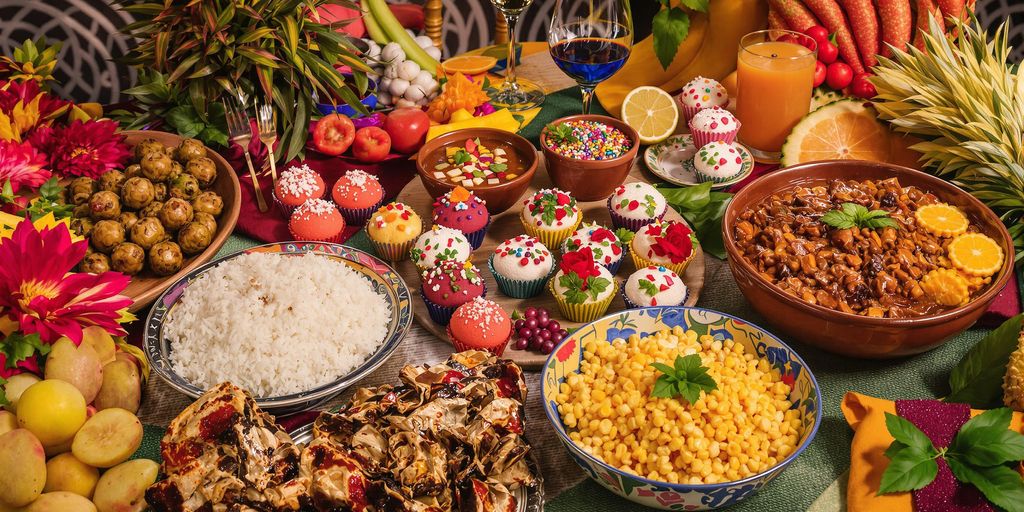
Traditional Dishes for Carnival
Carnival in Brazil is a feast for the senses, and the food is no exception. During this vibrant celebration, you’ll find street vendors and homes alike serving up hearty, flavorful dishes. Feijoada, the rich black bean and pork stew, often takes center stage. It’s filling, communal, and perfect for keeping energy levels high during the festivities. Another common sight is Coxinha, crispy fried dough filled with shredded chicken, which makes for an easy-to-eat snack while enjoying the parades. Don’t forget the sweet treats like Brigadeiros—little chocolate fudge balls that are as much a part of the celebration as the music and dancing.
Christmas and New Year’s Feasts
The holiday season in Brazil is all about family, and the food reflects that. Christmas dinner often features a roasted turkey or Chester, a specially bred chicken that’s incredibly juicy. Alongside the main dish, you’ll find Farofa, a toasted manioc flour mixture with bits of bacon or sausage, and Salpicão, a cold chicken salad with vegetables and mayonnaise. For dessert, Rabanadas, Brazil’s version of French toast, are a must. New Year’s Eve has its own traditions, with lentils served for good luck and grapes eaten at midnight to usher in prosperity.
Regional Festival Foods
Different regions in Brazil have their own unique celebrations and corresponding dishes. In the Northeast, for example, Festa Junina (June Festival) is marked by foods made from corn, like Pamonha (a sweet corn pudding wrapped in corn husks) and Canjica (a creamy corn and milk dessert). In the South, churrasco, or Brazilian barbecue, is often the highlight of local festivals, with skewers of grilled meats served to crowds. Meanwhile, in the Amazon, Tacacá, a tangy soup made from manioc and shrimp, is a festival favorite, offering a taste of the region’s indigenous roots.
Brazilian Beverages to Complement Your Meal
Caipirinha: The National Cocktail
The caipirinha is Brazil’s most iconic cocktail, and for good reason. Made with cachaça (a sugarcane spirit), fresh lime, sugar, and ice, it’s a refreshing drink that perfectly balances tart and sweet flavors. The preparation is simple: lime wedges are muddled with sugar to release their juices, then cachaça and ice are added. While the classic version is made with lime, variations like caipiroska (using vodka) or caipifruta (with additional fruits like passion fruit or strawberries) are also popular. It’s a staple at gatherings and a must-try for anyone exploring Brazilian cuisine.
Guaraná: A Refreshing Soda
Guaraná soda is a beloved non-alcoholic beverage in Brazil. Made from the guaraná fruit, which grows in the Amazon rainforest, this soda has a distinct, slightly fruity taste that’s hard to compare to anything else. It’s light, fizzy, and pairs well with almost any meal. Brazilians often enjoy it during lunch or as a refreshing pick-me-up on a hot day. If you’re looking for something uniquely Brazilian but without alcohol, guaraná is your go-to drink.
Coffee Culture in Brazil
Brazil is one of the world’s largest coffee producers, so it’s no surprise that coffee holds a special place in the country’s culinary culture. From a quick shot of “cafezinho” (a small, strong coffee served black) to creamy cappuccinos, coffee is enjoyed throughout the day in Brazil. Morning routines often include a cup of coffee paired with pão de queijo (cheese bread), and social gatherings frequently revolve around coffee breaks. If you’re a coffee enthusiast, trying Brazilian coffee is an absolute must—it’s rich, aromatic, and deeply ingrained in daily life.
Cooking Techniques and Ingredients in Brazilian Cuisine
The Role of Manioc in Brazilian Cooking
Manioc, also known as cassava, is a cornerstone of Brazilian cuisine. This versatile root vegetable is prepared in countless ways, from savory to sweet. One of the most common uses is to make farinha, a toasted flour that’s sprinkled over dishes like feijoada or used as a base for farofa. Manioc is also transformed into tapioca, a chewy starch used for making crepes or desserts. Another popular derivative is polvilho, a starch essential for pão de queijo, Brazil’s famous cheese bread. The adaptability of manioc makes it a staple in kitchens across the country.
Grilling and Barbecue Traditions
Brazilian barbecue, or churrasco, is more than just a method of cooking—it’s a cultural experience. Originating in the southern region, this technique involves grilling meats over open flames, often on skewers. Cuts like picanha (top sirloin cap) are seasoned simply with coarse salt to let the meat’s natural flavors shine. The grilling process is slow and deliberate, ensuring a tender, smoky result. Churrasco is usually served with accompaniments like chimichurri, farofa, and grilled vegetables, making it a communal feast that’s perfect for gatherings.
Tropical Fruits in Everyday Dishes
Brazil’s tropical climate blesses it with an abundance of exotic fruits, many of which are staples in daily meals. Fruits like açaí, guava, and passion fruit are not just eaten fresh but also incorporated into juices, smoothies, and desserts. Mangoes and papayas often appear in breakfast spreads, while coconuts are used in both savory dishes and sweets. The use of fruits extends to beverages as well, with many opting for fresh fruit juices over sodas. These vibrant ingredients add a natural sweetness and a burst of flavor to various dishes, showcasing the country’s rich agricultural heritage.
Exploring Brazilian Cuisine at Home
Essential Ingredients for Brazilian Recipes
To recreate the vibrant flavors of Brazil in your kitchen, you’ll need some key ingredients that are staples in Brazilian cooking. Here are a few essentials to get you started:
- Manioc (Cassava): This versatile root is used in many forms, from farinha (toasted cassava flour) to tapioca starch for pão de queijo.
- Dendê Oil: A bright orange palm oil that adds a distinct flavor to dishes like moqueca and acarajé.
- Black Beans: A cornerstone of Brazilian cuisine, especially in dishes like feijoada.
- Coconut Milk: Used to give a creamy texture to stews and desserts.
- Guaraná Syrup: If you’re planning to make homemade Brazilian sodas, this is a must-have.
Stocking these ingredients ensures you’re well-prepared to dive into authentic Brazilian recipes.
Tips for Preparing Authentic Dishes
Cooking Brazilian food at home is not just about the ingredients; it’s also about the techniques and traditions. Here are some tips to keep in mind:
- Take Your Time: Many Brazilian dishes, like feijoada, are slow-cooked to let the flavors meld together beautifully.
- Don’t Skimp on Freshness: Fresh herbs like cilantro and parsley are often used to garnish and enhance the flavors.
- Experiment with Spices: Brazilian cuisine isn’t overly spicy, but it uses a variety of seasonings like cumin, paprika, and bay leaves.
- Use the Right Utensils: A clay pot can make a big difference when cooking moqueca, as it helps retain heat and distribute flavors evenly.
Where to Find Brazilian Ingredients Abroad
Finding authentic Brazilian ingredients might seem tricky if you’re not in Brazil, but there are ways to get what you need:
- Specialty Stores: Many cities have Latin American or Brazilian grocery stores that stock items like farinha and guaraná.
- Online Retailers: Websites dedicated to international foods often carry Brazilian staples.
- Local Substitutes: If you can’t find a specific ingredient, research substitutes. For example, you can use cornstarch instead of tapioca starch in some recipes.
Once you’ve gathered your ingredients and mastered the techniques, cooking Brazilian food at home becomes a fun and flavorful adventure. And who knows? You might just fall in love with the process as much as the dishes themselves.
Fast Internet, Zero Roaming Fees
Enjoy high-speed eSIM data while exploring Brazil’s flavors..
The Global Influence of Brazilian Cuisine
Brazilian Restaurants Around the World
Brazilian cuisine has made its way across the globe, with restaurants in major cities showcasing the country’s diverse flavors. From churrascarias (Brazilian steakhouses) to cozy cafes serving pão de queijo, these establishments offer a slice of Brazil to curious diners. Cities like New York, London, and Tokyo boast a variety of Brazilian eateries, making it easier than ever to experience these unique dishes without hopping on a plane.
Fusion Dishes Inspired by Brazil
The global appeal of Brazilian food has led to the creation of fusion dishes that combine local ingredients with Brazilian techniques. For example, you might find sushi rolls with Brazilian tropical fruits or pizzas topped with catupiry cheese. These creative dishes highlight how Brazilian flavors can blend seamlessly with other cuisines, bringing something fresh and exciting to the table.
The Growing Popularity of Brazilian Flavors
Brazilian ingredients like açaí, guaraná, and tapioca are becoming staples in international markets. These foods not only add exotic flavors but are also celebrated for their health benefits. As Brazil is a major exporter of agricultural products, including a wide range of food items, the world is becoming more familiar with the country’s culinary offerings. This growing popularity reflects how Brazilian cuisine continues to captivate taste buds globally.
Wrapping Up Our Brazilian Culinary Journey
Brazilian cuisine is like a colorful mosaic, with each dish telling its own story. From the hearty comfort of feijoada to the sweet simplicity of brigadeiro, every bite offers a glimpse into the country’s rich culture and history. Whether you’re cooking at home or exploring a Brazilian restaurant, these flavors are an invitation to experience something truly special. So, grab a fork, share a meal, and let the tastes of Brazil bring a little joy to your table.
Seamless Mobile Data Everywhere







